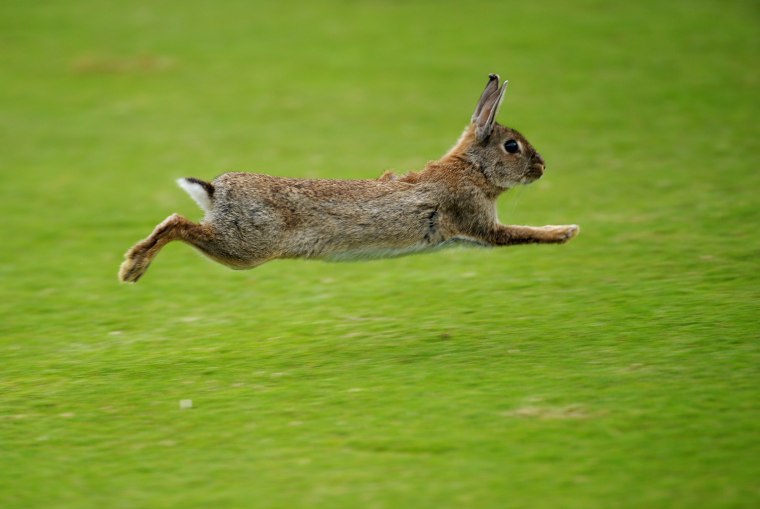From behind, some wild rabbits can be easily picked out by the glowing white patches of fur on their tails. While it might look like a painted-on target that cries, "Eat Me," once the chase is on, that same tail could help befuddle hunters — foxes, owls, bobcats, hawks or snakes — who get too close, new research suggests.
While running a park trail, Dirk Semmann, a social behavior researcher at the University of Gottingen in Germany, noticed a white-rumped cottontail skipping out of his way. As the rabbit changed directions swiftly and unpredictably, the white beacon on which the scientist's eye was naturally trained would disappear with each sharp turn, leaving Semmann guessing which way to follow.
"The whole animal is turning around, you don't see the tail anymore," Semmann, recounting that first chase, told NBC News.
Semmann guessed that the rabbit's tail gave it an evolutionary advantage, "otherwise it wouldn't be there," he explained. To test it out, he and two colleagues designed a video game and enlisted human "predators" to assess the effect of a disappearing patch of white.
Twenty-four human test subjects followed a scrolling white or dark patch on a green screen, which simulated a rabbit running while being pursued by a predator through a field. The virtual bunnies would make sudden, sharp turns to the right or left, typical of their escape behavior, and the humans were instructed to keep in pursuit, by pressing buttons that indicated if the bunnies turned right or left.
"We found a significant difference ... when the 'tail' was present, the participants made more incorrect answers, more mistakes," Semmann said.
Then, in the second round, the 24 volunteers were offered a small cash prize when they punched the right buttons, to match the split-second instincts of a hungry predator that's seconds away from a rabbit dinner. The difference in their responses to the tailed and non-tailed targets was even more marked — the humans were effectively thrown off track.
To build a stronger case for his befuddlement explanation, Semmann hopes to follow his video game by tracking real rabbits in the wild, though preferably without those bunnies being caught and eaten.
More about bunny behavior:
- What killed Neanderthals? Scientists blame those rascally rabbits
- Viral Internet 'Frankenstein' rabbit is a modern-day jackalope
Via: Nature News
As well as Dirk Semmann, the authors of "Conspicuous Rump Patch Causes Predator Confusion," which was presented at the Behavior 2013 Conference, include Tessa Cappelle and Yvan Russell.
Nidhi Subbaraman writes about science and technology. Follow her on Facebook, Twitter and Google+.
